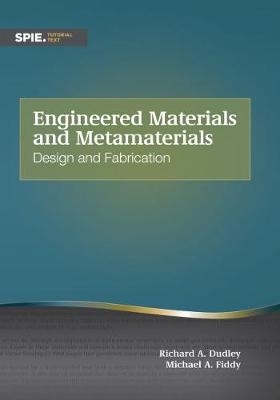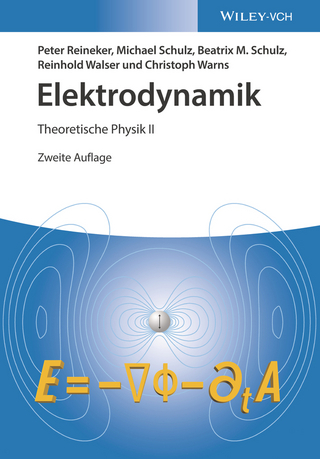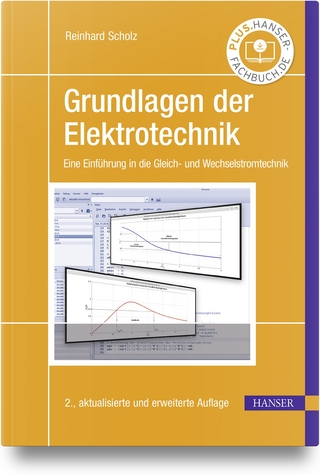
Engineered Materials and Metamaterials
SPIE Press (Verlag)
978-1-5106-0215-1 (ISBN)
The field of metamaterials arose from a deepened understanding of how electromagnetic waves interact with materials and subwavelength-scale scattering structures. The exploitation of these more-complex material–wave interactions has generated much global research activity. We can, in principle, engineer materials to greatly extend the selection of those currently available.
This Tutorial Text presents the electromagnetic properties of both naturally occurring and manmade materials, focusing especially on structured or engineered metamaterials. After a review of Maxwell’s equations and material properties, the concepts of resonant meta-atoms and composite media are introduced. The fabrication of metamaterials and the properties of negative-index materials are explained. The difficulties associated with reducing the size of meta-atoms for use at optical frequencies are described, and the use of metamaterials for superresolution imaging is presented in some detail.
Preface
Acknowledgments
1 Introduction
1.1 Historical Perspective
1.2 Basic Electromagnetic Properties of Materials
1.3 Maxwell's Equations
1.4 Differential Form of Maxwell's Equations
1.4.1 Polarization
1.4.2 Conductivity
1.4.3 Dispersion
1.4.4 Permittivity
1.4.5 Birefringence
1.4.6 Permeability
1.4.7 Index of refraction
1.4.8 A phenomenological description of refractive index
1.5 The Six Velocities of Light
1.5.1 Free-space velocities
1.5.2 Waves in a medium
1.5.3 Superluminal speeds
References
2 Material Properties
2.1 Material Classification
2.2 Metals
2.2.1 Drude model
2.3 Dielectrics
2.3.1 Lorentz oscillator model
2.3.2 Kramers–Kronig relations
2.3.3 Semiconductors
2.3.4 Debye relaxation model
2.3.5 Nonlinear dispersion
2.4 Equivalent Circuit Overview
2.4.1 Impedance
2.4.2 Capacitance
2.4.3 Inductance
2.4.4 RLC descriptions
References
3 Meta-atoms
3.1 Overview
3.2 Meta-atom Building Blocks
3.2.1 Spherical particles: dipole response
3.2.2 Spherical particles: resonant response
3.3 Metal Resonators
3.3.1 The first metallic metamaterial
3.4 Split-Ring Resonators
3.4.1 SRR equivalent circuit theory
3.4.2 SRR size limitations
3.4.3 SRR geometrical scaling
3.4.4 SRR scaling considerations
3.5 Constitutive Parameter Estimation
3.6 Metasurfaces
References
4 Composite Media and Effective Medium Approximations
4.1 Composite Media
4.1.1 Spherical particles
4.1.2 Birefringent materials
4.1.3 Homogenization
4.2 Form-Birefringent Metamaterials
4.2.1 Other limitations of EMAs
4.2.2 Bounds for effective permittivity
4.3 Summary
References
5 Anisotropic Microwave Metamaterials
5.1 Form-Birefringent Materials: A Case Study
5.1.1 Gigantic anisotropies
5.1.2 Inexpensive higher-index microwave metamaterials
5.1.3 Tunable negative group delay
5.2 Example Microwave Material
5.2.1 High-index materials: a case study
5.2.2 Physical mechanisms
References
6 Negative Index
6.1 History of Negative Index
6.1.1 Principle of least action
6.1.2 Re-radiation from a negative-index material
6.1.3 Double-negative material (DNM) possibilities
6.1.4 The 'perfect' lens
6.1.5 Evanescent amplification revisited
6.1.6 Pendry's negative-index formalism
6.1.7 A rigorous solution to the 'perfect' lens
6.2 Graphical Examples of Wave Propagation
References
7 Numerical Simulations
7.1 Frequency-Dependent Numerical Models
7.2 Negative-Index Properties and Computational Restrictions
7.2.1 Practical discussion of 'exactly' n = –1
7.2.2 Segmented metamaterials
References
8 Making Smaller Structures: Optical Metamaterials
8.1 Material Challenges
8.2 Plasma Waves and Plasmonics
8.2.1 Bulk polaritons: the Drude model
8.2.2 Surface plasmon-polaritons
8.3 Optical Metamaterials
8.4 Hyperbolic Metamaterials
8.4.1 Photonic density of states
References
9 Optical Materials and Fabrication Challenges
9.1 Thin Films
9.2 Thin Dielectric Gaps between Metal Surfaces
9.3 Fabrication Methods and Challenges
9.3.1 Electron beam lithography
9.3.2 Dry etching
9.4 Process Impact of Reactive Ion Etching and E-Beam Lithography
9.4.1 Metal deposition and lift-off process
9.4.2 Focused-ion meam (FIB) milling
9.5 Focused Ion Beam Challenges
9.5.1 Interference lithography
9.5.2 Nanoimprint lithography (NIL)
9.5.3 Fabrication of multilayer structures
9.5.4 Two-photon photo-polymerization (TPP) technology
References
10 Superresolved Imaging
10.1 Superresolution Using Metamaterials: a Case Study
10.2 The Inverse-Scattering Problem
10.3 Degrees of Freedom
10.4 Numerical Examples
10.5 Perfect Imaging
10.6 Slab Imaging Example
10.7 Compressive Sampling
References
Index
| Erscheinungsdatum | 05.08.2016 |
|---|---|
| Reihe/Serie | Tutorial Texts |
| Verlagsort | Bellingham |
| Sprache | englisch |
| Maße | 152 x 229 mm |
| Gewicht | 428 g |
| Themenwelt | Naturwissenschaften ► Physik / Astronomie ► Elektrodynamik |
| Technik ► Maschinenbau | |
| ISBN-10 | 1-5106-0215-1 / 1510602151 |
| ISBN-13 | 978-1-5106-0215-1 / 9781510602151 |
| Zustand | Neuware |
| Haben Sie eine Frage zum Produkt? |
aus dem Bereich


